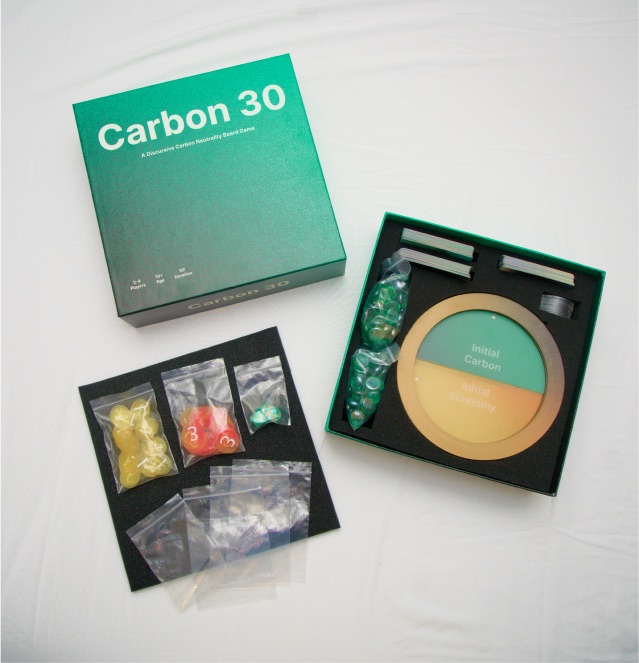2024 Best in Graphic Arts/Product Design – Selina Gong

Carbon 30
Boardgame
Abstract
“Carbon 30” is a discursive board game about carbon neutrality. While serving as an educational tool that introduces the mechanism of the global carbon credit system, the game aims to criticize and provoke reflection on how a system ostensibly motivated by positive goals can be exploited for negative competition and to hinder the development of opponents. In a world where the richest country holds the most sway and power, systems can be manipulated to fulfill the desire for increased capital.
“Carbon 30” is a board game that is original in concept, design, and execution. In the game, there are projects such as carbon capture and storage, and renewable projects to offset and reduce total carbon in the atmosphere, thus gaining carbon credits that players can expend. There are also traditional projects such as fossil fuels that will expend those carbon credits.
The game allows players to explore how the carbon credit system is implemented in the day-to-day running of a nation, and how it is used as a tool to restrain environmental pollution. Contrary to the environmental goal, the winning mechanism of the game—to be the most powerful (the richest) nation in the world—creates a conflict between implementing the carbon system and winning the game. Through personal experience of this conflict, players are either induced by the mechanism to not facilitate the carbon system or collaborate together to reinforce environmental protection, prioritizing saving the planet over “winning the game.”
The project involves game design, graphic design, laser cutting, UV printing, and cutting sponges by the designer. The box and cards are externally printed by the Game Crafter. The game mechanism references the award-winning board game “7 Wonders,” with original designs of different card content and an interval voting process vital to reflecting the carbon system. The background of the cards uses free gradients created by Jason Santos.
The box contains
Individual Game Board x 4 (Round Ring), Initial Carbon Tiles x 12, Initial Economy Tiles x 12, Carbon points x 120, 1-Billion Money Tile x 48, 3-Billion Money Tile x 24, Game Cards x 120 (40 each Phase), Collaboration Marker x 8 ,4 Side Dice x 1, 10 Side Dice x2
